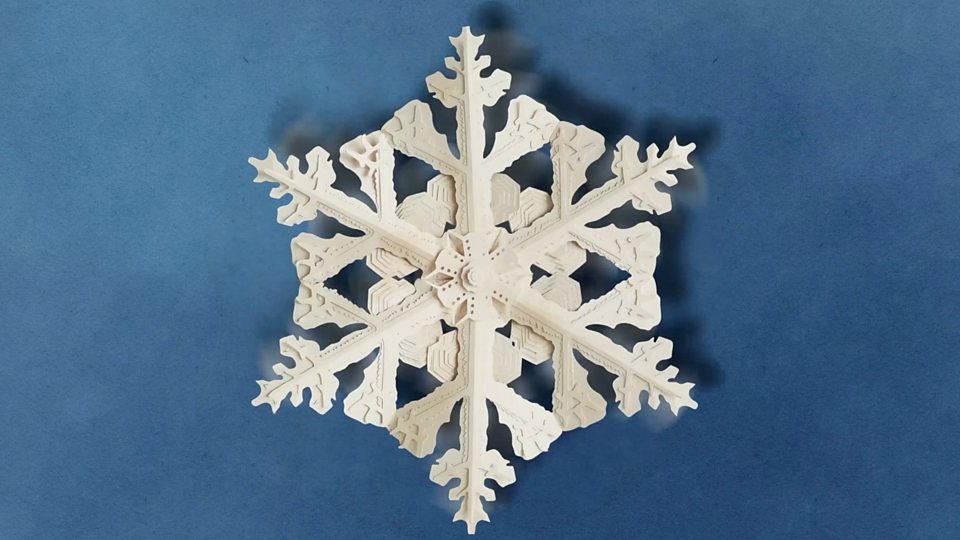
What do snowflakes tell us about our universe?
Professor Brian Cox: Snowflakes are complex, beautiful, mysterious and utterly captivating. But for all its complexity – and its endless diversity – the structure of a snowflake can be explained by some universal laws of nature. Laws that explain everything from snowflakes to galaxies. Let's start from the beginning. What is a snowflake? Or, to use its more technical name, an ice crystal? Ice crystals form in clouds when water vapor meets small specks of dust or pollen. This forms its small hexagonal core. The tips stick out and are rough. This attracts water molecules. Then more water molecules. And more. These form the branches of our snowflake. The size and shape of these branches depend on the exact temperature and humidity that the snowflake encounters during its journey through the clouds, which are pulled downward by the force of gravity. Each one takes a slightly different route — which means no two snowflakes are exactly the same. When a snowflake lands on your sleeve, it's on a completely unique journey to get to you. Before it melts in an instant. Back in 1611, on a frigid January morning in Prague, a snowflake fell on the sleeve of mathematician Johannes Kepler. It got him thinking: “Why do snowflakes have six sides?” Kepler's breakthrough was his theory that this hexagonal pattern was the most efficient use of space. Whether the honeycomb is inside a beehive. Or piles of stacked artillery shells. Or a delicate and fleeting snowflake. It took 400 years to prove his theory, 400 years. What Kepler did not know at the time was that each molecule of water, or H2O, consisted of two hydrogen atoms and one oxygen atom. When water molecules pack together when frozen, the angle between the hydrogen atoms is always about 105 degrees. This gives us the six sides. At its core, a snowflake is always hexagon-shaped. But they can grow into all kinds of weird and wonderful shapes. Long and thin like a pencil. Sharp like a needle. Cylindrical like a bullet. Or, sometimes, triangular. But the truth is that most snowflakes are kind of… well, bubble-like. If you talk to a snowflake photographer – there are very few in the world – they will tell you that it takes days and days in the cold to get the “money shot.” Conditions must be just right – between minus 15 and minus 13. But ever since Wilson Bentley, a Vermont farmer, took the first photos of stunning snowflakes in 1885, we've been hooked. Scientists have shown that symmetry is incredibly pleasing to the human brain. The snowflakes are all radially symmetrical, which means you can cut them into identical slices, like a cake. Seashells, flowers, starfish, and even spiral galaxies, such as the Milky Way, share this type of symmetry. And nature has one last trick up its sleeve. Snowflakes are not actually white. It's transparent, but it has a lot of edges, and this scatters the light, making it appear white. Every snowflake is a microcosm of the laws of physics. Gravity makes him fall. Electromagnetism determines its shape. And you've got symmetry. The same applies to stars, solar systems and planets. And with us. When you look at a snowflake, you can read its history. Its own unique story. The experiences she faces shape her into who she is. Just like us, really.

“Web maven. Infuriatingly humble beer geek. Bacon fanatic. Typical creator. Music expert.”





More Stories
NASA Close to Deciding What to Do With Boeing’s Troubled Starliner Spacecraft
Scientists May Have Discovered ‘Dark Oxygen’ Created Without Photosynthesis: NPR
Real Scientists Lived on Fake Mars in a Texas Shed for a Year